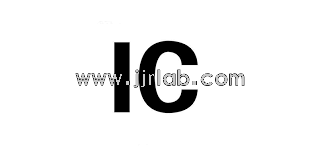
UKCA Marking Guide for UK Product Compliance (2025)
ukca Marking Guide: Compliance Steps for the UK Market
This guide walks you step by step through the process of affixing the UKCA mark to products exported to the UK. It is written from the manufacturer’s perspective, broken down into 5 key steps, with additional notes for importers.
Product Categories CoveRED by This Guide
The ukca compliance process typically applies to the following product categories:
1. Toys
2. Electronics
3. Machinery
4. Personal Protective Equipment (PPE)
5. Medical Devices
6. Gas Appliances
At a Glance: The 5-Step Process
1. Identify applicable UK regULations
2. Find designated standards
3. Create UKCA and labeling documentation
4. Conduct product testing
5. Prepare compliance documentation
Step 1: Identify Applicable UK Regulations
The UKCA mark is only applicable to products covered by one or more UK regulations. Below is an overview of the main regulations and their corresponding product scopes:
1. Toys (Safety) Regulations 2011– for all toy products
2. Restriction of Hazardous Substances (RoHS) Regulations 2012– for electrical and electronic equipment
3. Electromagnetic Compatibility (EMC) Regulations 2016– for products emitting or affected by electromagnetic interference
4. Electrical Equipment (Safety) Regulations 2016– for household and general electrical appliances
5. Radio Equipment Regulations 2017– for wireless signal-emitting devices
6. Ecodesign for Energy-Related Products Regulations 2010– for eco-design products
7. Supply of Machinery (Safety) Regulations 2008– for all types of machinery
8. Personal Protective Equipment Regulations (EU) 2016/425– for PPE items such as goggles, protective clothing
9. Medical Devices Regulations 2002– for medical equipment
10. Gas Appliances (EU) Regulations 2016/426– for gas appliances and fittings
11. Measuring Instruments Regulations 2016– for devices like taximeters
Note:
A single product may fall under multiple regulations. Each regulation may require separate labeling, testing, technical documentation, and more.
Case Studies
Case A: Sunglasses
Applicable Regulation: Personal Protective Equipment Regulations (EU) 2016/425
Case B: Electronic Toy
Applicable Regulations:
Toys (Safety) Regulations 2011
RoHS Regulations 2012
EMC Regulations 2016
Step 2: Find Designated Standards
While UK regulations require products to be "safe," the specific requirements for achieving compliance are defined in Designated Standards. These standards act as a benchmark for conformity.
Examples:
Toy Safety Standards:
EN 71-1: Mechanical and physical properties
EN 71-2: Flammability requirements
en 71-3: CheMICal migration limits
EMC Standards:
EN 50148: Electronic taximeters
EN 1155: Electromechanical door holders
EN ISO 14982: EMC for agricultural and forestry machinery
PPE Standards:
EN 136: Full face masks
EN 343: Protective clothing – Rain protection
EN 511: Gloves for protection against cold
Tip:
Incorporate these standards into your product design from the beginning to ensure smoother testing and certification later.
Step 3: Create UKCA and Labeling Documents
All products bearing the UKCA mark must include the following information:
Mandatory Information
1. Product name/model
2. Serial number or batch number
3. Manufacturer’s name
4. Manufacturer’s address and contact details
Importer Information (for non-UK manufacturers)
Importer’s company name (UK-based)
Importer’s address and contact details
Additional Labeling Requirements (depending on regulation)
1. Warning signs or safety symbols
2. Usage instructions
3. Technical specifications
Where to Place the UKCA Mark
The UKCA mark should be placed on:
The product itself (preferred)
The packaging (if not possible on the product)
The accompanying documentation (e.g., manual)
Step 4: Product Testing
Your product must undergo testing by a third-party testing laboratory, such as JJR Lab in China, to confirm compliance with relevant designated standards.
Recommended Testing Labs Include:
JJR Lab (China)
SGS
TÜV
Eurofins
Once passed, the lab will issue a test report. This report becomes part of your technical file and supports your UK Declaration of Conformity.
Step 5: Prepare Compliance Documentation
UK Declaration of Conformity
Must include:
1. Product name, model, and batch/serial number
2. Manufacturer details
3. Authorized representative details (if applicable)
4. Product image(s)
5. List of applicable UK regulations
6. List of designated standards
7. Notified Body details (if applicable)
Technical Documentation Should Contain:
1. Product description
2. Technical drawings and bill of materials
3. Label and packaging artwork
4. User manual
5. Test reports
6. Copy of the UK Declaration of Conformity
User Manual (if required)
Should cover:
1. Installation procedures
2. Usage instructions and warnings
3. Maintenance and cleaning guidelines
4. Disposal methods
UK Approved Bodies (If Applicable)
Certain high-risk products (e.g., high-risk PPE or medical devices) must be submitted to a UK Approved Bodyfor review. This includes:
1. Submission of samples and technical documents
2. Issuance of a Type Examination Certificate
Whether this is required depends on the Conformity Assessment Procedurefor your product type.
JJR Labin China offers full UKCA compliance testing and certification services — helping you save up to 40%compared to many other labs and bodies.
Email:hello@jjrlab.com
Write your message here and send it to us
 Amazon ISO/IEC 17025 UL Testing Service Laboratory
Amazon ISO/IEC 17025 UL Testing Service Laboratory
 How to get CE Certification for Lighting Products?
How to get CE Certification for Lighting Products?
 CE Certification Standards & Process for Elect
CE Certification Standards & Process for Elect
 Japan METI Registration & Japanese Agent Servi
Japan METI Registration & Japanese Agent Servi
 Temperature Shock Test (IEC 60068-2-14:2009)
Temperature Shock Test (IEC 60068-2-14:2009)
 Electromagnetic Compatibility (EMC) Testing Servic
Electromagnetic Compatibility (EMC) Testing Servic
 Canada ISED Certification (IC Certification) Analy
Canada ISED Certification (IC Certification) Analy
 CSA C22.2 No.42 Compliance Test Report for Amazon
CSA C22.2 No.42 Compliance Test Report for Amazon
Leave us a message
24-hour online customer service at any time to respond, so that you worry!




